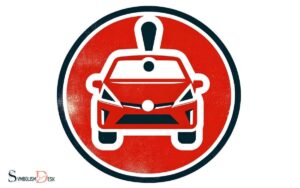Car Insurance Symbol Ratings List: ISO!
Car insurance symbol ratings, often referred to as insurance service office (ISO) symbols, are numerical codes assigned to vehicles to represent the relative risk and cost associated with insuring them.
The ratings range typically from 1 to 27, with higher numbers indicating a higher level of risk or a more expensive vehicle to insure.
These symbols take into account factors such as the car’s price, safety features, theft rates, and cost of repairs. Insurers use these ratings to calculate premiums, so understanding your vehicle’s symbol can give you insight into your insurance costs.
Insurance companies rely on these symbol ratings to assess the likelihood of claims and the potential cost of covering a vehicle.
Here’s a brief overview of how these symbols work:
- Cost of the Vehicle: Expensive cars are usually more costly to repair or replace, hence they tend to have higher symbol ratings.
- Safety Features: Vehicles equipped with advanced safety features might be less likely to be involved in serious accidents, potentially leading to lower ratings.
- Theft Rates: Cars that are commonly targeted for theft could have higher ratings due to the increased risk.
- Performance Attributes: High-performance vehicles might carry greater accident risk, influencing a higher rating.
- Repair Costs: Models with higher part and labor costs for repairs will likely have a higher symbol rating.
An example of how this might look in a list is as follows:
- Economy Sedan: Symbol 4
- Family SUV with advanced safety features: Symbol 6
- High-performance Sports Car: Symbol 15
- Luxury SUV: Symbol 18
Understanding your vehicle’s insurance symbol rating can help you anticipate insurance expenses and make an informed decision when purchasing a car.
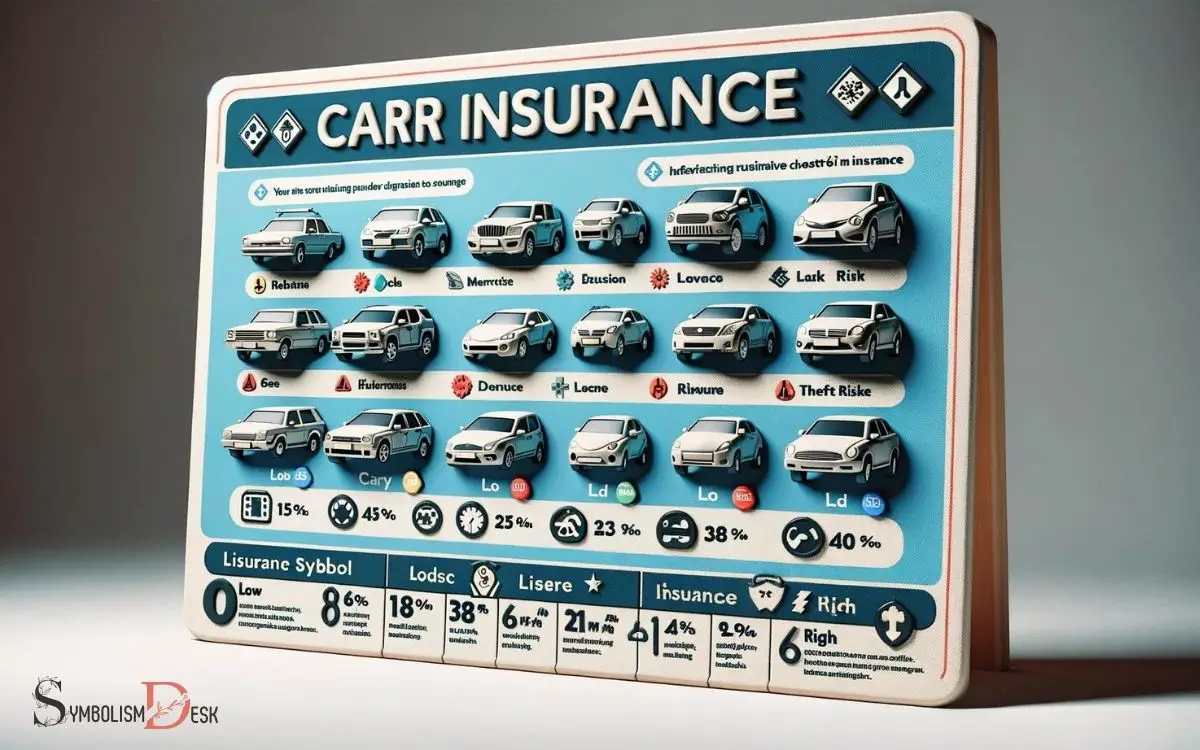
Key Takeaway
Understanding Car Insurance Symbols
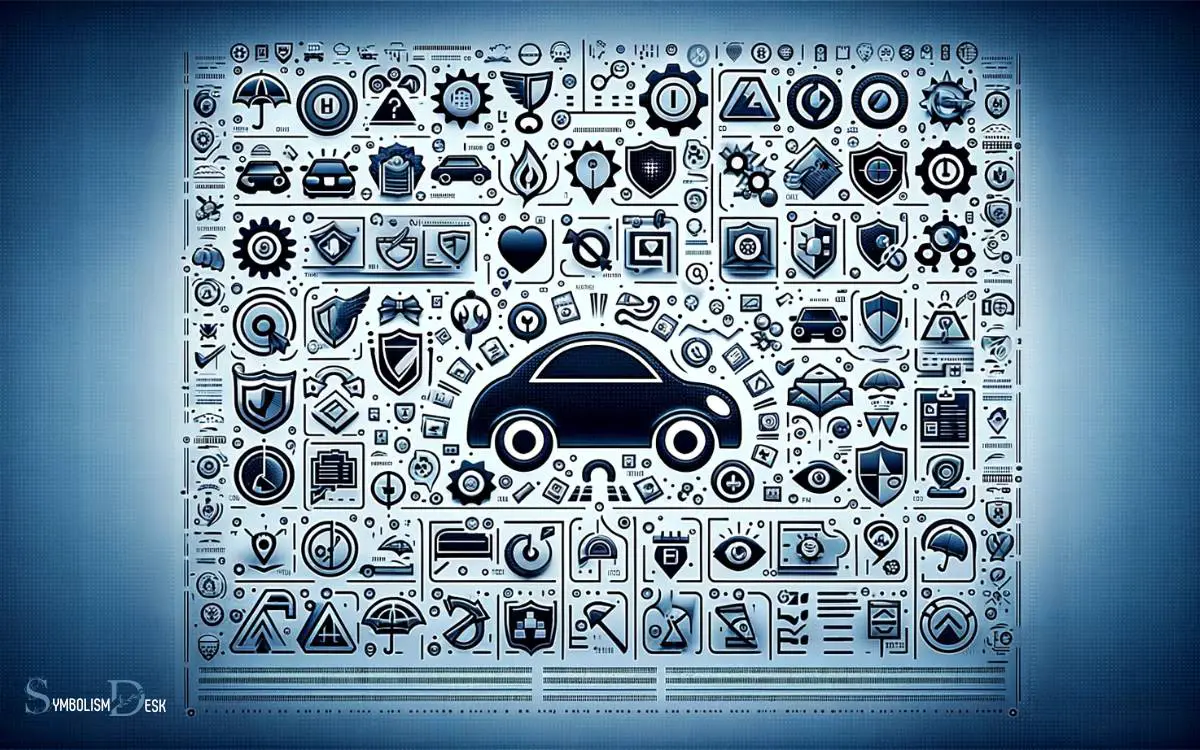
The article provides an overview of the car insurance symbols, aiming to clarify their meanings and significance for policyholders. Car insurance symbols are used by insurance companies to signify the level of coverage provided for different parts of a vehicle.
Understanding these symbols is crucial for policyholders to comprehend their insurance policies fully. These symbols typically range from 1 to 99, with lower numbers indicating broader coverage and higher numbers representing more limited coverage.
For instance, symbol 1 may represent coverage for any auto, while symbol 25 could pertain to owned autos other than private passenger autos.
By grasping these symbols, policyholders can make informed decisions about their coverage and ensure they have the protection they need. Familiarizing oneself with these symbols can empower individuals to navigate the complexities of car insurance more effectively.
Importance of Symbol Ratings
Understanding car insurance symbol ratings is essential for evaluating the scope of coverage provided by an insurance policy. Symbol ratings directly impact the premium cost and coverage limits, making it crucial for policyholders to comprehend their implications.

The importance of symbol ratings can be elucidated through various factors:
- Premium Costs: Symbol ratings influence the premium costs, with higher-rated symbols often resulting in higher premiums.
- Coverage Limits: Symbol ratings can determine the maximum amount an insurer will pay for a claim, affecting the extent of coverage.
- Risk Assessment: Symbol ratings reflect the risk associated with insuring specific vehicles, aiding insurers in assessing potential losses.
Factors Influencing Symbol Ratings
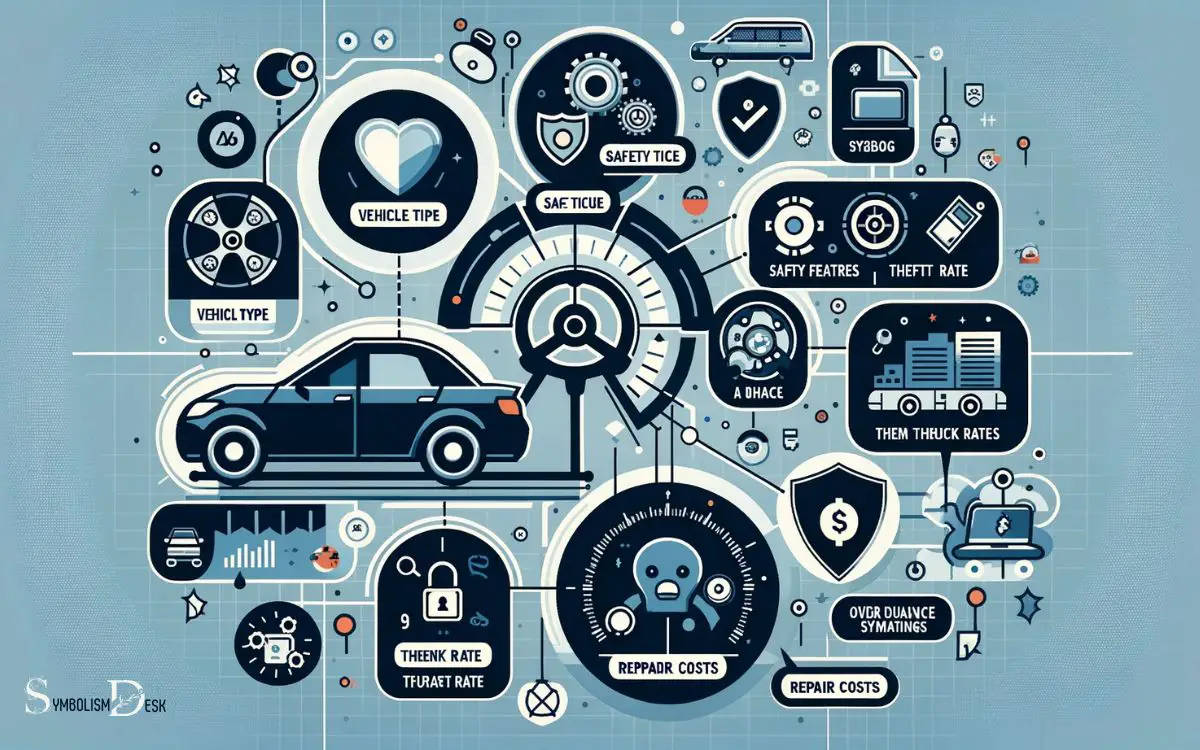
Factors affecting car insurance symbol ratings include vehicle theft rates and accident frequency. Insurance companies use statistical data to assess the risk associated with specific vehicle models.
High theft rates or frequent accidents for a particular vehicle can result in a higher symbol rating, indicating a higher risk and potentially leading to higher insurance premiums.
On the other hand, vehicles with lower theft rates and fewer accidents are likely to have lower symbol ratings, making them less expensive to insure.
Additionally, the cost of vehicle repairs and the safety features of a car also play a role in determining symbol ratings.
Understanding these factors can help consumers make informed decisions when purchasing a vehicle and selecting an insurance policy. This knowledge will also be helpful in comprehending how symbol ratings affect premiums.
How Symbol Ratings Affect Premiums
Car insurance symbol ratings have a direct impact on the cost of insurance premiums. These ratings are determined by various factors such as the make and model of the vehicle, its safety features, and the likelihood of theft.
Understanding how symbol ratings affect premiums is crucial for individuals looking to make informed decisions about their car insurance coverage.

Impact on Insurance Costs
The impact of symbol ratings on insurance costs is significant for a policyholder’s overall premium. These ratings directly influence the pricing of car insurance, and understanding their impact is crucial for making informed decisions.
Here are the key ways in which symbol ratings affect insurance costs:
- Risk Evaluation: Symbol ratings are used by insurance companies to assess the risk associated with insuring a particular vehicle. Higher symbol ratings indicate a greater risk, which can result in higher premiums.
- Premium Calculation: Symbol ratings play a vital role in determining the base rate for car insurance premiums. Vehicles with lower symbol ratings typically qualify for lower premiums.
- Policyholder’s Financial Burden: Symbol ratings can have a direct impact on the amount a policyholder pays for their car insurance, affecting their overall financial burden.
Factors Affecting Premium
Symbol ratings directly impact the amount policyholders pay for car insurance premiums, reflecting the risk associated with insuring their vehicles.
The higher the symbol rating assigned to a particular vehicle, the higher the insurance premium is likely to be. Insurers use these ratings to assess the risk of insuring a specific car model, based on factors such as the cost of repairs, likelihood of theft, and safety features.
Therefore, cars with higher symbol ratings are more expensive to insure compared to those with lower ratings. Additionally, a vehicle’s symbol rating can also be influenced by the driver’s history and location.
Understanding how symbol ratings affect premiums is crucial for policyholders when selecting a car to insure. Next, it’s important to consider comparing symbol ratings among insurers to find the best coverage at the most competitive rates.
Comparing Symbol Ratings Among Insurers
When comparing symbol ratings among insurers, it’s important to consider the potential variation in ratings across different companies.
This variation can significantly impact the premium rates offered by insurers. Understanding how symbol ratings differ among insurers can help individuals make informed decisions when selecting car insurance policies.
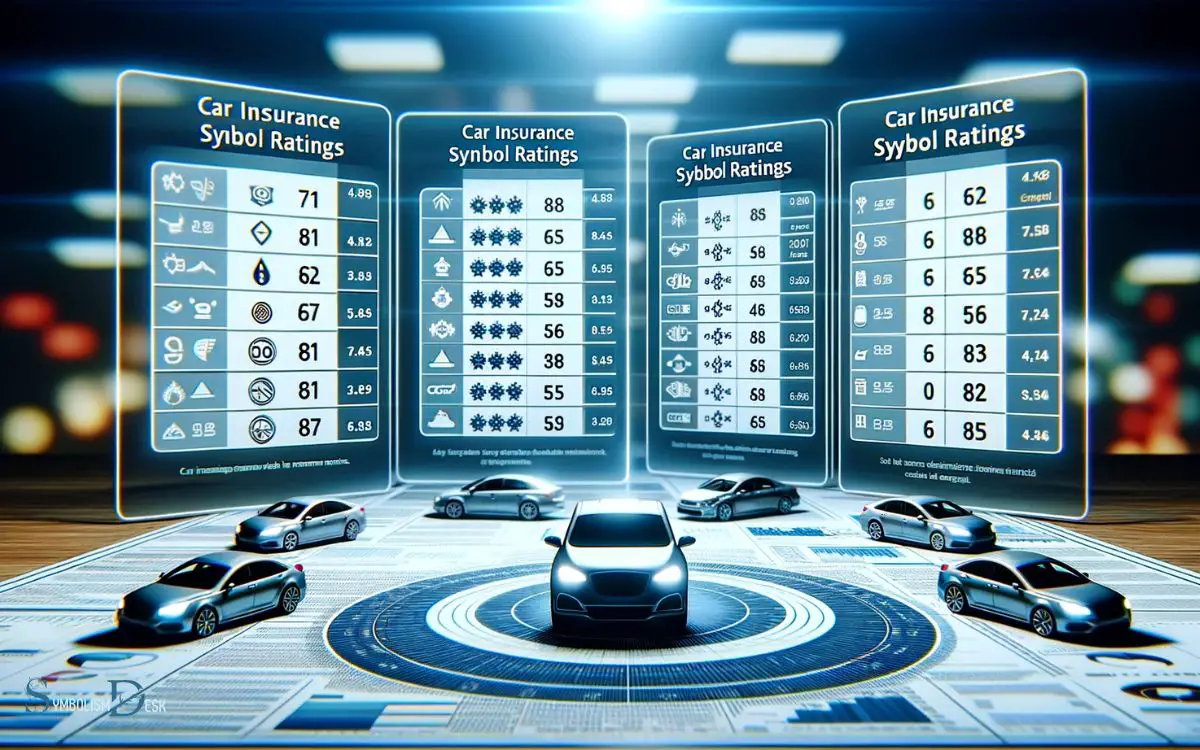
Rating Variation Across Insurers
As insurers use their own methods of assigning symbol ratings, the variation in ratings among different insurance companies can significantly impact the cost of car insurance for drivers.
This variation is due to several factors:
- Underwriting Criteria: Each insurer has its own underwriting criteria, leading to differences in how they assess risk and assign symbol ratings to vehicles.
- Historical Data: Insurers may have varying historical data on car models, leading to differences in how they rate the symbols for those vehicles.
- Regional Considerations: Some insurers may place more emphasis on regional factors such as local accident rates and theft statistics, leading to differences in symbol ratings based on location.
Understanding these variations is crucial for drivers seeking the best car insurance rates, as it highlights the importance of comparing symbol ratings among insurers.
Impact on Premium Rates
The variation in symbol ratings among different insurance companies can directly impact the premium rates that drivers are offered, reflecting the insurers’ individual approaches to assessing risk and determining car insurance costs.
Insurers with higher symbol ratings may offer lower premium rates, as they perceive the associated vehicles as lower risk. Conversely, insurers with lower symbol ratings may charge higher premiums to compensate for the perceived higher risk.
It’s important for drivers to compare symbol ratings among insurers when seeking car insurance, as this can result in significant differences in premium rates for the same coverage.
Understanding how each insurer evaluates symbol ratings and its impact on premium rates can help drivers make informed decisions when selecting the best car insurance policy for their needs.
Tips for Utilizing Symbol Ratings
To effectively utilize symbol ratings for car insurance, it is important for policyholders to understand how these ratings impact their coverage and premiums.

Understanding the following tips can help policyholders make informed decisions:
- Research Symbol Ratings: Policyholders should research the symbol ratings of their vehicles to understand how they are assessed and what impact they have on insurance premiums.
- Consider Vehicle Changes: If policyholders are considering purchasing a new vehicle, they should research the symbol rating of the vehicle beforehand to anticipate any potential changes in insurance premiums.
- Discuss with Insurer: It is advisable for policyholders to discuss symbol ratings with their insurance provider to gain clarity on how these ratings specifically affect their coverage and premiums.
Conclusion
Understanding car insurance symbol ratings is like having a roadmap to navigate the world of insurance. By knowing the meanings behind the symbols, drivers can make more informed decisions about their coverage options. Electric car symbols provide crucial information about coverage for electric vehicles and can help drivers choose the best policy for their specific needs. Understanding car insurance symbol ratings and electric car symbols can ultimately save drivers time and money by ensuring they have the right level of protection for their vehicle.
It helps drivers make informed decisions about their coverage and premiums. By comparing symbol ratings among insurers, drivers can find the best value for their needs.
Just like a compass guiding a traveler, symbol ratings can point drivers in the right direction towards affordable and reliable car insurance coverage.




